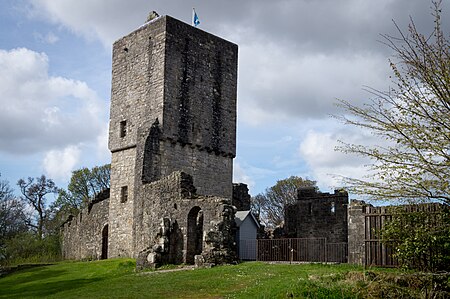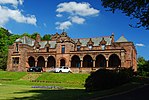Mugdock Castle
Buildings and structures completed in the 14th centuryCastles in Stirling (council area)Clan GrahamDemolished buildings and structures in ScotlandScheduled Ancient Monuments in Stirling

Mugdock Castle was the stronghold of the Clan Graham from the middle of the 13th century. Its ruins are located in Mugdock Country Park, just west of the village of Mugdock in the parish of Strathblane. The castle is within the registration county of Stirlingshire, although it is only 2 kilometres (1.2 mi) north of Milngavie, East Dunbartonshire, on the northern outskirts of Greater Glasgow.
Excerpt from the Wikipedia article Mugdock Castle (License: CC BY-SA 3.0, Authors, Images).Mugdock Castle
Craigallian Road,
Geographical coordinates (GPS) Address Nearby Places Show on map
Geographical coordinates (GPS)
| Latitude | Longitude |
|---|---|
| N 55.965556 ° | E -4.324444 ° |
Address
Mugdock Castle
Craigallian Road
G62 8EL
Scotland, United Kingdom
Open on Google Maps









